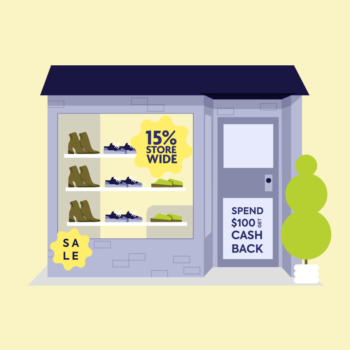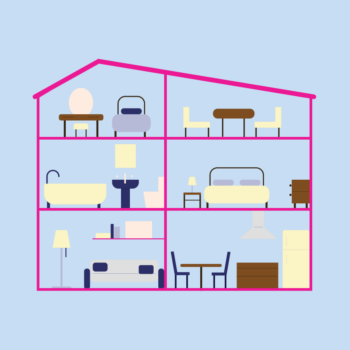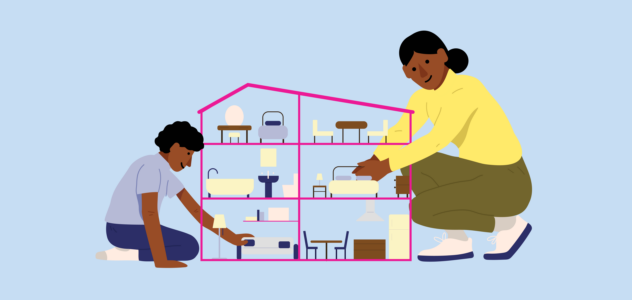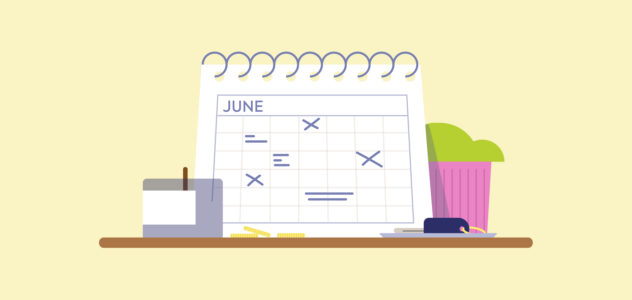What if there was a way to pay less interest over the life of your loan just by making a few simple changes?
Well, there is.
It’s called an offset account — a bank account that’s linked to your home loan which can help you reduce your interest and pay off your home loan, sooner.
Sound too good to be true?
Well, it isn’t.
Let’s jump into…
- What is an offset account, anyway?
- Offset account benefits (hint: savings)
- How much could you save with an offset account?
- Offset account vs savings account
Sooooo what is an offset account?
Let’s start from the beginning. When we look at a home loan, the repayments are primarily made up of two things: the principal and interest.
The principal is the total amount of money you’ve borrowed from a lender (so when you pay it back, you reduce the amount you owe). The interest is the not-so-fun part your lender charges you for borrowing money, which is calculated as a percentage of your principal. There may be other expenses to do with your home loan, but principal and interest are the two biggies.
Now enter an offset account — a way to work smarter, not harder, when it comes to calculating your interest charges.
An offset account is similar to an everyday bank account, only it’s attached to your home loan. You can typically withdraw, deposit and even get paid into your offset account.
The big difference? When your bank calculates interest charges, it takes into account allllll the money you have in your offset account. This ultimately means they minus your offset account balance from your home loan balance before working out your interest charge.
Over the life of your loan, this could add up to save you thousands.
Offset account benefits
For many Aussies, an offset account is a no-brainer. Here’s why.
Savings
The big reason Aussies choose to get an offset account is to save money. Over the life of your loan, it could add up to thousands.
You can still spend your money
Just because your money is in an offset account, doesn’t mean you can’t access it. Your savings will remain as your cash — free for you to use as you please (unlike if you used these funds to make extra loan repayments).
Pay off your loan, sooner
Having money in your offset account can reduce your interest charges, which in turn, means you can pay down your principal balance, sooner. Booyah.
Easy to set up
Setting up an offset account involves minimal effort (especially when you have a broker — or home loan expert as we like to call them — on your side).
You’ll feel like an absolute boss
Nothing says “I’m an adult” quite like telling friends at brunch that you’ve just set up your offset account.
How much could you save with an offset account? Let’s look at a scenario…
“Ok, ok, so you can save money with an offset account. But exactly how much are we talking?”
Let’s look at two (kinda simplified¹) examples.
Say you have a 30-year, owner-occupier loan of $600,000 at an interest rate of 4.2%. Here’s how it’ll look with each approach…
Without an offset account:
If you have an everyday bank account (one that’s *not* linked to your home loan) with a balance of $50,000, the home loan balance you’ll pay interest on stays at $600,000. With an interest rate of 4.2%, your repayments (principal and interest) work out to be roughly $2,934 per month (or $35,208 per year). You may also earn interest on the amount in your transaction account, but this is typically at a very low rate.
With an offset account:
If the $600,000 loan is linked to an offset account that has a balance of $50,000, the amount you’ll pay interest on is now only $550,000. With an interest rate of 4.2%, your repayments (principal and interest) work out to be roughly $2,689 per month (or $32,268 per year). Yes, you’ll miss out on the interest you would be earning in your everyday account balance — but the gains will more than make up for that.
So, with an offset account, you’ll pay off an extra $245 per month (principal and interest). Which adds up to $2,940 per year and thousands more over the life of a loan… juuuust because you had your savings linked to your loan.
Seems like a no-brainer, right?
Offset account vs paying off your mortgage.
“Can’t I just pay down my mortgage instead?”
Yes, you can just pay down your mortgage. And the advantage of this is you’ll feel good knowing there’s less owing on your loan. Buuuut regardless of whether you pay down your mortgage, or leave that money sitting in an offset account, you’ll still be charged the same amount of interest. This is why so many Aussie homeowners choose to leave it in their offset account as a “rainy day fund.”
What’s the difference between a redraw and an offset account?
A redraw and an offset account share similarities, but they’re not the same thing.
For starters, they both allow you to reduce the amount of interest you pay on your loan. Woo!
But while an offset account is like an everyday savings account, a redraw facility isn’t. It’s an extra feature on your home loan that allows you to access money you’ve *already* contributed to your mortgage. This is a handy feature if life hands you some lemons you need to fork out some cash for, fast — like a car breakdown or unexpected expense.
Importantly, a redraw facility isn’t as flexible as an offset account. You can’t access money as willy-nilly — there are often rules and requirements depending on your lender.
Do you earn interest on an offset account?
With an offset account, you’ll SAVE on interest, but you won’t earn interest on that money.
So, when we consider an offset account vs savings account (like the example above) you would typically expect to save far more through an offset account than you would earn if that same amount of money were sitting in an everyday (or even high interest) savings account.
See the difference?
Do all home loans come with an offset account?
No, not all home loans come with the option to have an offset account (many fixed rate loans don’t).
This is where a home loan expert comes in handy. They’ll help you compare apples with oranges, so you can choose a home loan that’s right for you.
Still scratching your head asking “should I get an offset account?”
While an offset account is a no-brainer for many Aussies, every situation is unique.
If in doubt, you can chat with one of our home loan experts today who will weigh up your situation and present your options. Simple.
1 Assumes loan amount, offset account balance and interest rate remains constant. These are simplified examples only – it may work out differently in practice and it will depend on the way interest is calculated and the terms of your offset facility.
















































































